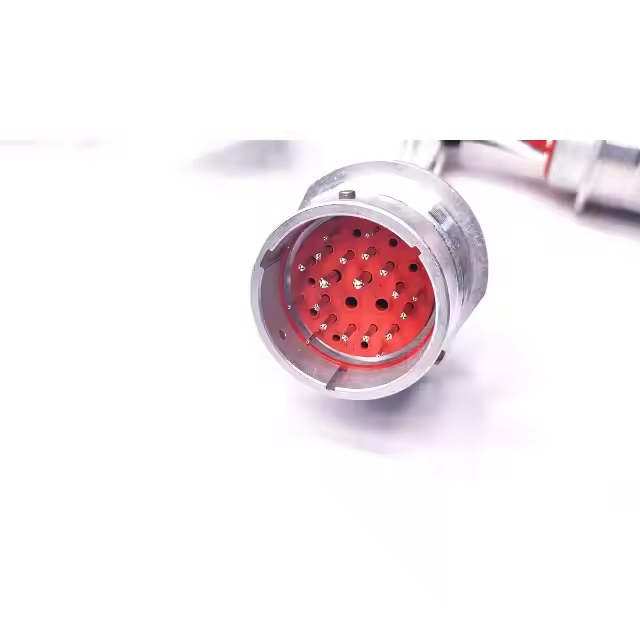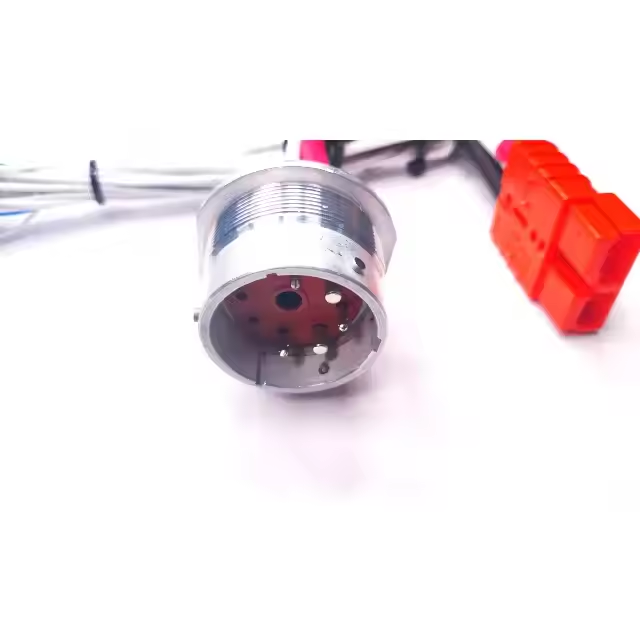Overview of Wiring Harness Manufacturing Proces
The manufacturing process flow of the wiring harness mainly covers the following key steps: Firstly, it is the preparation stage of wiring harness materials, which include wires, terminals, connectors, cable ties, wire number labels, insulating tapes, heat-shrinkable sleeves, etc. Secondly, the preparation work of manufacturing tooling and equipment should be done, such as crimping machines, heat-shrinking machines, scissors, and various testing equipment, all of which need to be prepared in advance. Subsequently, the actual production process begins, which successively includes the wire stripping operation, that is, stripping off a certain length of the insulating sheath of the wire according to the design requirements; then, wire number sleeving is carried out to accurately put corresponding identification numbers on each wire for subsequent assembly and maintenance identification; after that, the terminal crimping step is performed to tightly connect the terminals and wires through professional equipment; next, connector assembly is carried out to ensure that each connector mates accurately with the corresponding terminals and wires; after the assembly is completed, wiring and binding need to be carried out to make the overall layout of the wiring harness neat and organized; then, strict testing of the wiring harness is carried out to check whether its electrical performance and connection reliability meet the standards; finally, it is the wiring harness finishing and warehousing stage, where the qualified wiring harnesses are properly sorted, packaged and stored in the designated area.

I. Key Processes
(I) Terminal Crimping
Terminals, as crucial components connecting wires and instruments or equipment, bear the responsibility of transmitting the power and signals of the wires. The inflow or outflow of power and signals to or from the instruments or equipment is all achieved through terminals. Therefore, the quality of terminal crimping and whether it complies with relevant standards and specifications directly affect the stable and normal operation of the instruments or equipment. A terminal mainly consists of three core parts, namely, the mating area, the transition area, and the crimping area. In the actual production process, the following crimping quality problems are likely to occur:
- Abnormal Crimping Height: The crimping height specifically refers to the height of the cross-section of the conductor crimping area after the crimping operation is completed, and it is a key indicator for measuring the quality of crimping. If the crimping height is too large, the wire cores cannot be effectively compressed, resulting in a relatively large ineffective void in the crimping area. Since the effective contact area between the wire and the terminal metal is greatly reduced, the contact resistance will increase significantly, causing heating phenomena, and in severe cases, even burning the terminals. Conversely, if the crimping height is too small, the pulling force and rated current carrying capacity of the cable will be greatly reduced, which may lead to the wire cores being crushed or the crimping area of the terminal being broken, causing the wire connection to break and ultimately resulting in an open circuit fault. To ensure the quality of terminal crimping, professional measuring tools such as micrometers should be used to accurately measure the products after crimping, and the crimping pliers and crimping equipment should be calibrated regularly.
- Deviation in Insulation Crimping Area Size: Given the wide variety of wire types, specifications, and terminal types, there is currently no unified quantitative regulation, and operators mostly rely on the experience accumulated in actual operations to control. The main function of insulation crimping is to provide stress relief for the conductor crimping area, ensuring that when the cable is bent, the wire crimping area can avoid being broken with the buffer effect of the insulation crimping area. Therefore, high-quality insulation layer crimping is of great significance for protecting the wire crimping effect. If the insulation layer crimping is too small, the metal stress in the insulation crimping area will increase sharply, and the stress relief function will be severely weakened; conversely, if the insulation layer crimping is too large, its stress buffer effect on the wire crimping area will be greatly reduced. In actual operation, it is usually judged by visual observation and gently shaking the wire by hand, with the criterion that the insulation crimping area does not shake.
- Loose Conductor Crimping Area Problem: This is one of the most common quality problems in the terminal crimping process and is also the main cause of crimping failure. Once the situation occurs where all the wire cores are not completely enclosed in the conductor crimping area, the strength and current load capacity of the crimped parts will be greatly reduced. The solution to this problem is relatively simple. Just re-bundle the cables into a bundle and then insert them into the terminal to be crimped. It should be noted that stripping the insulating layer from the cable is an independent operation process. During this process, due to improper handling or bundling, it is very easy to accidentally separate the wire cores. Therefore, it is recommended to use special wire stripping pliers for wire stripping operations and accurately control the length of the insulating layer removed to ensure that the insulating sleeve does not completely fall off the cable until it is ready to be crimped with the terminal on the cable. In this way, the occurrence probability of the wire core loosening problem can be minimized.
- Improper Wire Stripping Length: During the wire stripping operation, it is necessary to ensure that the wire stripping length is just right. If the wire stripping is too short, in the terminal crimping stage, the wire cannot be fully inserted into the conductor crimping area, and the crimping force between the terminal and the wire cannot meet the requirements of the tensile test. During the operation of the locomotive, affected by vibration, the wire is very likely to fall off. At the same time, since the contact metal surface between the wire and the terminal is reduced, severe heating will occur here, and even an open circuit fault may be caused. To address this problem, the wire stripping length should be strictly controlled to ensure sufficient margin, and the wire should be fully inserted into the crimping area during crimping.
- Excessive Wire Insertion Depth: Contrary to the problem of too short wire stripping, if the wire is inserted too much and even enters the transition area, the overly long wire core may prevent the pin from being inserted correctly, resulting in poor contact between the wires of the two connectors and ultimately leading to signal interruption. In addition, there is a common fault, that is, due to excessive wire insertion, a short circuit occurs between two circuits. For example, in the connector of the locomotive traction motor speed sensor, multiple locomotive failures have been caused due to this situation. To eliminate such quality problems, it is necessary to strictly control the wire stripping length to avoid being too long, and at the same time, accurately control the appropriate amount of wire insertion when crimping the wire.
(II) Connector Assembly
The following key points need to be emphasized in the connector assembly process:
- The types of connectors used in locomotives are numerous and complicated. Many connectors have very similar appearances but completely different internal structures. Therefore, during the assembly operation, operators must accurately pick materials according to the material rack coding. After getting the materials, they need to make a detailed comparison with the operation instruction book to ensure the correct selection of materials.
- When inserting the terminal into the connector socket, an appropriate amount of force needs to be mastered. When a crisp "click" sound is heard, it indicates that the terminal has been inserted in place, and at this time, it is not allowed to continue applying force. In the actual production site, many quality problems have been caused because operators judged the insertion situation only by appearance.
- The assembled connectors must be properly protected. Since most connectors are applied to locomotive signal lines and control lines, the dust and moisture in the production site can easily penetrate the interior of the connectors, resulting in short circuits between adjacent lines, seriously interfering with the normal transmission of signals and further affecting the control of locomotives and vehicles. To this end, the protective cover provided with the connector should be used to tightly cover and fasten the entire connector to ensure the assembly quality.
Recent Posts
2025-05-07 10:33:06
Leakage protection power cord
2025-04-29 15:25:42
OBD connector and XH2.54 connector harness
2025-04-24 14:31:00



